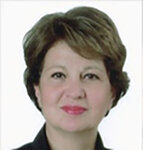Traditional Vs Modern English Language Teaching Methods: Study Based on a Survey
DOI:
https://doi.org/10.52634/mier/2024/v14/i1/2465Keywords:
Language Teaching Methods, Survey Approach, Regression, Path AnalysisAbstract
The study compares traditional and modern English language teaching methods and examines the prevalence and adoption of these methods by English language teachers. The sample consists of 100 English language teachers. The researchers use OLS regression, binary logistic regression and structural equation modelling to establish an association between adopting a particular language teaching method and the characteristics of the language teachers. Results indicate that experienced teachers prefer the social learning method, while less experienced teachers advocate the bilingual, experiential, and listening and observation methods. There are gender differences in accepting these language teaching methods. Female language teachers show an inclination towards the listening and observation method, whereas male teachers ardently favour the bilingual and experiential methods. Regression analysis reveals a higher probability of adoption of bilingual translation methods by non-English educational background teachers. Experienced teachers adopt the Social Learning Method, while less experienced teachers prefer experiential learning and bilingual translation methods more. Results of the path analysis using structural equation modelling indicate that the gender of the teachers mediates their educational background in the adoption of the particular language teaching method.
Downloads
Metrics
Downloads
Published
How to Cite
Issue
Section
License
Copyright (c) 2024 Himanshu Joshi, Nishi Sharma, Pranava Manjari N

This work is licensed under a Creative Commons Attribution 4.0 International License.
The articles published in the MIER Journal of Educational Studies, Trends and Practics (MJESTP) are distributed under the terms of the Creative Commons Attribution License (CC BY 4.0), which permits unrestricted use, distribution, and reproduction in any medium, provided the original author and source are credited.
- Copyright on any open access article in the MIER Journal of Educational Studies, Trends and Practics (MJESTP) published by Model Institute of Education and Research (MIER) is retained by the author(s).
- Author(s) grant MIER a license to publish the article and identify himself/herself/themselves as the original publisher.
- Authors also grant any third party the right to use the article freely as long as its integrity is maintained and its original authors, citation details and publisher are identified.
- The Creative Commons Attribution License 4.0 formalizes these and other terms and conditions of publishing articles.
References
Brinton, D., Snow, A., & Wesche, B. (1989). Content based second language instruction. Boston: Heinle & Heinle Publishers.
Brown, D. (1994). Principles of language learning and teaching. Englewood Cliffs, NJ: Prentice Hall Regents.
Carroll, J. B. (1963). A Model of School Learning. Teachers College Record, 64(8),1-9. https://doi.org/10.1177/016146816306400801 DOI: https://doi.org/10.1177/016146816306400801
Curran, A. (1976). Counselling-learning in second languages. Apple River, Illinois: Apple River Press.
Finocchiaro, M., & Brumfit, C. (1983). The functional national approach. Oxford University Press.
Garcia, M., & Nguyen, T. (2023). Culturally responsive English language teaching: A framework for inclusive practices. Journal of Multilingual Education, 15(2), 210-228.
Kim, S., & Chen, L. (2021). Revisiting task-based language teaching: A meta-analysis of recent studies. Language Teaching Research, 18(4), 421-438.
Krashen, S. (1981). Second language acquisition and second language learning. Oxford: Oxford University Press.
Larsen-Freeman, D., & Anderson, M. (2011). Techniques and principles in language teaching. Oxford University Press.
Lewis, M. (1993). The lexical approach: The state of elt and a way forward. Language Teaching Publication.
Lightbrown, P., & Spada, N. (1993). How languages are learned. Oxford University Press.
Renau, L. (2016). A review of the traditional and current language teaching methods. International Journal of Innovation and Research in Educational Sciences, 3(2), 82-88.
Richards, C. (2001). Curriculum development in language teaching. Cambridge University Press. DOI: https://doi.org/10.1017/CBO9780511667220
Richards, J. C., & Rodgers, T. S. (2001). Approaches and methods in language teaching (2nd ed.). Cambridge University Press. DOI: https://doi.org/10.1017/CBO9780511667305
Richards, J. C., & Rodgers, T. S. (2014). Approaches and methods in language teaching (3rd ed.). Cambridge University Press. DOI: https://doi.org/10.1017/9781009024532
Vázquez, V. P., & Ellison, M. (2018). Examining teacher roles and competencies in content and language integrated learning (CLIL). Linguarum Arena: Revista de Estudos em Didática de Línguas da Universidade do Porto,, 4, 65-78.





















